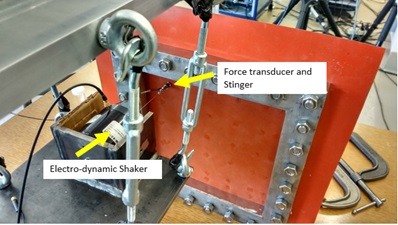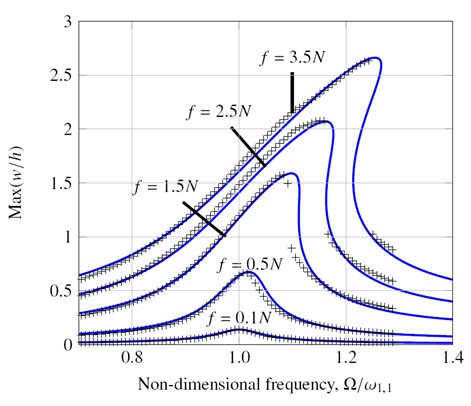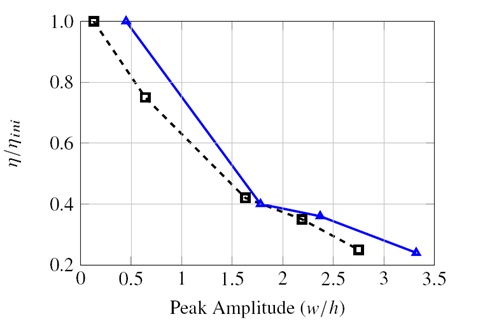


|
The large amplitude forced vibrations of thin rectangular plates made of different types of rubbers are
investigated both experimentally and theoretically. The excitation is provided by a concentrated transversal
harmonic load. Clamped boundary conditions at the edges are considered, while rotary inertia, geometric imperfections
and shear deformation are neglected since they are negligible for the studied cases. The von Kármán nonlinear
strain-displacement relationships are used in the theoretical study; the viscoelastic behaviour of the material
is modelled using the Kelvin-Voigt model, which introduces nonlinear damping. An equivalent viscous damping model
has also been created for comparison. In-plane pre-loads applied during the assembly of the plate to the frame are
taken into account. In the experimental study, two rubber plates with different material and thicknesses have been
considered; a silicone plate and a neoprene plate.
The plates have been fixed to a heavy rectangular metal frame with an initial stretching. The large
amplitude vibrations of the plates in the spectral neighbourhood of the first resonance have been measured
at various harmonic force levels. A laser Doppler vibrometer has been used to measure the plate response.
Maximum vibration amplitude larger than three times the thickness of the plate has been achieved, corresponding
to a hardening type nonlinear response. Experimental frequency-response curves have been very satisfactorily
compared to numerical results. Results show that the identified retardation time decreases when the excitation
level is increased, whereas the equivalent viscous damping increases. |

